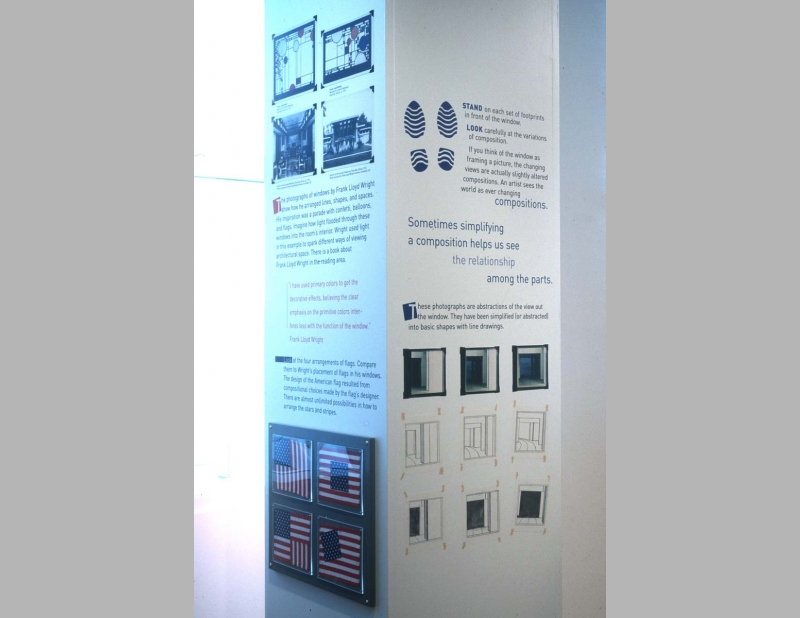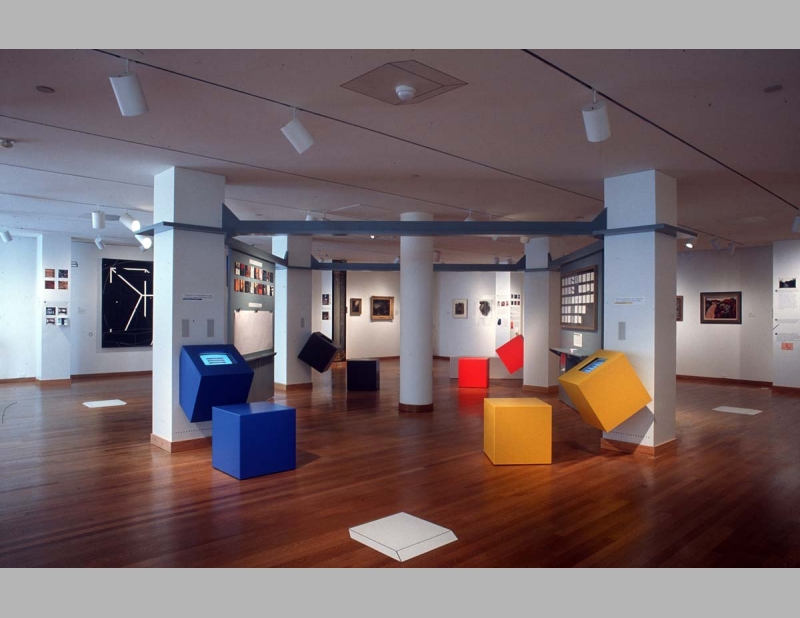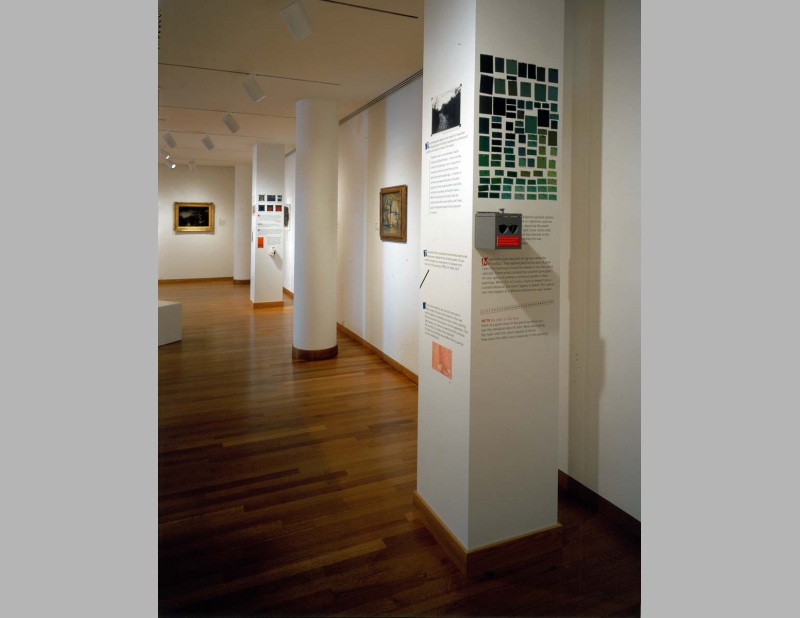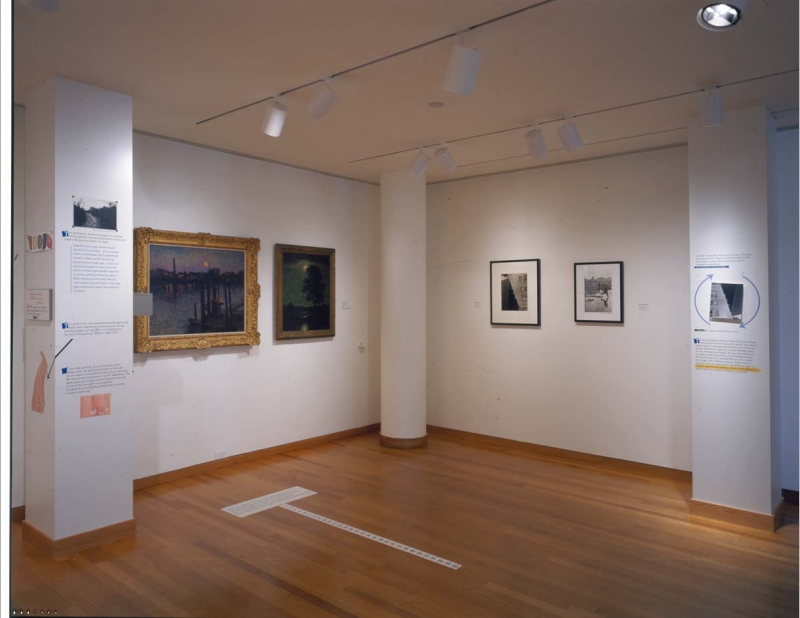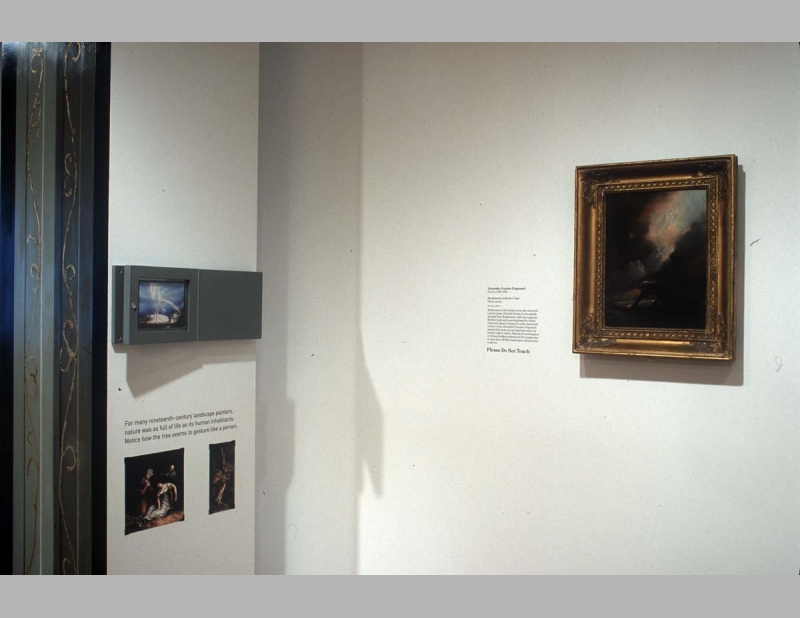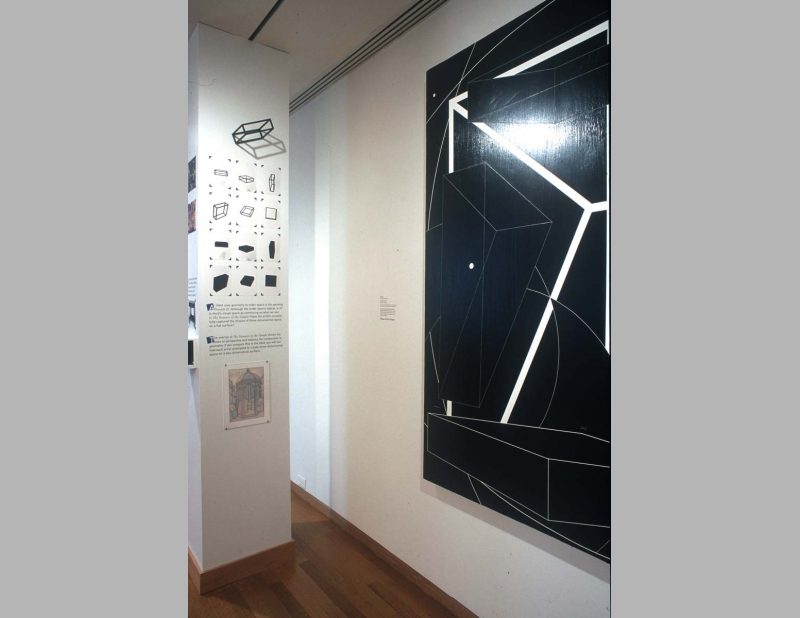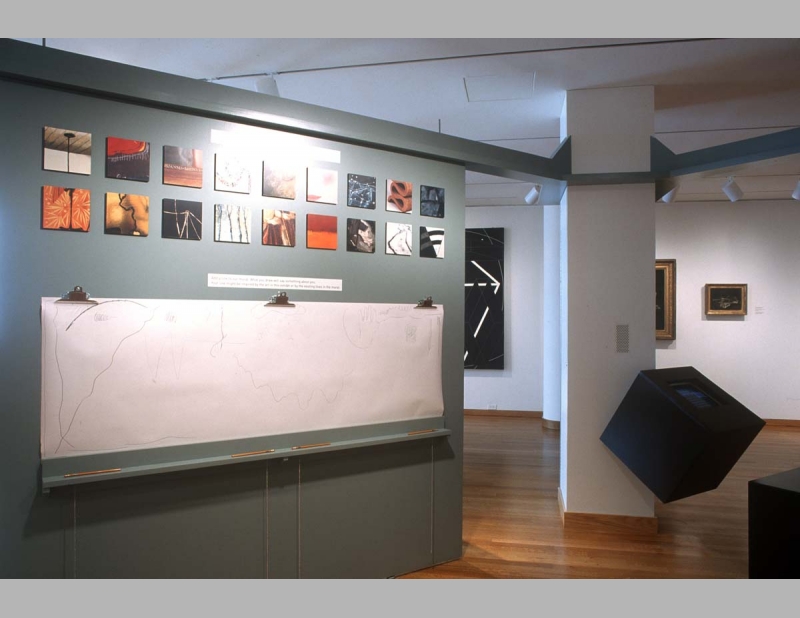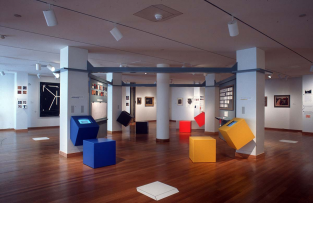Learning to Look 1999
Learning To Look is an orientation center that offers hands-on experiences to introduce new ways of looking. The installation is an interactive experience that introduces looking as a process to be learned and practiced. Fourteen artworks were chosen from the Museum's collection. Twenty elements have been developed to encourage ways of looking at, and experiencing the specific artworks. These elements offer insights into what moves an artist to create, how historical context effects our perception of art, are some styles of painting more "real " than others and what is creative thinking? It encourages re-thinking preconceptions and coming to one's own conclusions about artworks.
The artworks from the museum's collection are displayed on the walls of the room. Fifteen columns were added to the existing grid to act as information kiosks. The kiosks contain an intense collection of activities, clues, experiments, visuals and facts about the artworks that encourage looking, comparing and re-thinking preconceptions.
Some examples:
The abstracted representation of a carved African Cow Mask is made clear through its juxtaposition of a photo of an actual cow head allows. Additional images help visitors understand the artwork as a functional ceremonial object, and a reproduction of the gun shells, used on the mask, allow experimentation with the sounds made by the Mask in performance.
Two experiments allow color investigation. One accompanies a painting by Joseph Albers, the other a 19th century Pointillist painting.
The geometry and tricks of perception used by Al Held in his paintings are visually compared to a 16th century painting, a 3-dimensional wood model of the form in the painting, and to the very geometric forms of the Richard Meier museum building, seen out the adjacent window.
A hands-on experiment on the effects of light on color is adjacent to paintings by Impressionist artists, and a "mind's -on" experience with the almost infinite range of one color used in a painting of trees at dusk. On one wall the trompe l'oeil ornate column is an example of the artist's technique used in an adjacent painting.
A Center Square contains creative experiences that allow visitors to work like artists and to participate in solitary and group activities concerning color, line and creative thinking. Twelve artworks by students from the Atlanta College of Art were inspired by a still-life painting by the artist Peto that is on display nearby. The student's works are personal, visual interpretations that offer multiple ways of seeing the 19th century painting. On the shelf below the student paintings is an activity that allow visitors to explore the power of composition by manipulating the simplified shapes of the Peto painting.
The four columns of the Center Square hold computers with activities related to concepts and artworks in the exhibition.
